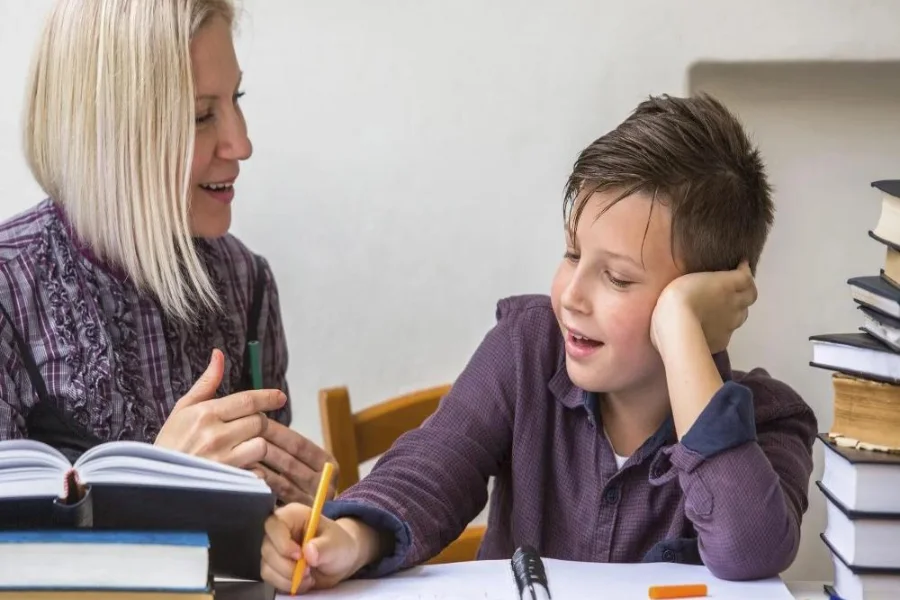Is Dysgraphia Disease?

Source: fsedu
Is Dysgraphia Disease?
The question Is Dysgraphia Disease? usually comes into discussions about learning difficulties. While some may quickly label it as a disease, it’s important to understand what dysgraphia involves. Is Dysgraphia Disease? is a common question among parents and teachers who notice children have problems with writing. This condition, usually misunderstood, permits a deeper look to dismiss common misunderstandings. Is Dysgraphia Disease? No, it’s not a disease but a learning disability affecting writing abilities, needing a proper understanding and suitable support methods to manage properly. This blog aims to shed light on dysgraphia, helping readers learn its effects and the best ways to support those affected.
Table of Content

Source: verywellfamily
Is there a Dysgraphia Therapy to Help Children?
Dysgraphia is a neurological condition that affects a child’s ability to form letters which moves into various other developmental arenas of a child. Though, there is hope. Various dysgraphia therapies and methods can considerably help children overcome these problems. This article tells about many useful dysgraphia therapies to help children with this condition.
Understanding Dysgraphia Disease
Before getting deep into therapies, it’s important to understand dysgraphia disease. This condition delays a child’s ability to write and usually affects coordination, fine motor skills, and the capability to express thoughts through writing. Recognizing this is the first step toward finding effective therapies.
Effective Dysgraphia Therapies for Children
Cross-Body Training
- Cross-body exercises, such as touching the left hand to the right foot, increase brain and body coordination. This can importantly benefit children with dysgraphia disease.
- Activities like dancing or sports that need cross-body movement can also be helpful.
Building Strength and Stability
- Supporting the essential and upper body can recover strength and control, which is necessary for writing.
- Simple exercises like wall pushups or playing with clay can build muscle strength in the hands and fingers.
For more details of our course, call on +919321024137 / +919869866277.
For download the brochure, Click Here!
Utilizing Audio-Recording
- For children struggling to express their thoughts in writing, audio recordings can be a valuable tool.
- They can speak their ideas and later transcribe them, easing the stress of writing.
Tailored Writing Tools
- Ergonomic pencils, pen grips, or typing programs designed for dysgraphia can make writing less physically demanding.
- Tools that reduce the strain on hands can make writing a more manageable task.
Visual Planning Aids
- Realistic planners can help kids plan and organize their thoughts before writing.
- These visual aids divide the writing practice into smaller, more convenient steps.
Occupational Therapy
- Occupational therapy is an essential dysgraphia therapy. It emphasizes improving fine motor skills, hand power, and coordination.
- Therapists can give adapted exercises and methods made according to each child’s needs.
Educational Therapy
- This form of dysgraphia therapy emphasizes teaching writing skills and methods.
- Educational counsellors work on spelling, grammar, and organizing thoughts, making writing less scary.
Technology Aids
- Speech-to-text software and word processors with spell check can be really helpful.
- These tools lets children to motivate on their ideas rather than the method of writing.
Cognitive Behavioural Therapy
- CBT can help children handle the frustration and anxiety related to dysgraphia disease.
- It helps build a positive mindset and flexibility, necessary for overcoming writing problems.
Tips for Supporting Children with Dysgraphia
- Motivate practice but avoid overexertion: Regular practice is necessary, but it’s important not to push children beyond their limits.
- Provide positive reinforcement: Celebrate small achievements to gain confidence.
- Create a supportive environment: Making sure of a quiet and comfortable space for writing activities.
While dysgraphia disease shows problems, there are many effective dysgraphia therapies and methods to support children. From cross-body training to cognitive behavioural therapy, each method provides unique profits. By learning about these options and finding what works best for each child, parents and teachers can play an important role in helping children with dysgraphia overcome their writing problems.
For more details of our course, call on +919321024137 / +919869866277.
For download the brochure, Click Here!

Source: verywellfamily
Different Types of Dysgraphia Resources for Teachers Available are?
Dysgraphia, a learning disability that impacts writing skills, can create important difficulties in the schoolroom. Teachers need effective methods to support students with this condition having a different type of dysgraphia resources at their removal. This article aims to focus on different types of dysgraphia resources for teachers, focusing on handwriting resources, multi-sensory resources, and technology resources, each made to help students in overcoming the problems faced due to dysgraphia disease.
Handwriting Resources
Handwriting resources are pivotal in addressing the motor aspects of dysgraphia.
These tools and methods include:
- Specialized Paper: Paper with high lines or different textures can help students control letter size and formation.
- Grip Aids: Pencil grips and ergonomic writing tools help in reducing hand pressure and improving control.
- Handwriting Programs: Programs like Handwriting without Tears provides proper methods, breaking down the writing process into convenient steps.
Such resources aim to increase fine motor skills and letter formation, necessary for students coping with dysgraphia disease.
Multi-sensory Resources
Multi-sensory resources involve more than one sense at a time, helping memory and learning holding.
These include:
- Sand or Shaving Cream Writing: This tactile method allows students to form letters with their fingers, integrating touch and movement.
- Letter Formation with Clay or Play dough: Building letters using malleable materials helps in reinforcing motor patterns.
- Visual and Auditory Cues: Incorporating songs, stories, and visual aids to teach letter formation and writing skills.
These multi-sensory dysgraphia resources for teachers help students internalize writing skills through varied sensory experiences.
Technology Resources
Technology offers innovative solutions to assist students with dysgraphia disease.
Key resources include:
- Voice-to-Text Software: This lets students to clear ideas without the wall of handwriting.
- Word Processors with Spell Check: These tools help in overcoming spelling and grammar problems, common in dysgraphia.
- Graphic Organizers: Software that helps in visually organizing thoughts can be a precursor to writing.
Technology resources deliver different methods for students to express themselves, thereby avoiding some of the direct problems faced by dysgraphia.
Dysgraphia resources for teachers are important in providing the necessary support to students facing problems due to dysgraphia disease. From handwriting aids to multi-sensory techniques and technological tools, these resources provides teachers with various methods to help in learning and skill development in students with dysgraphia.
By using these resources, teachers can importantly improve the educational experience and results for students facing problems with this learning disability.
For more details of our course, call on +919321024137 / +919869866277.
For download the brochure, Click Here!

Source: cloudfront
Are there Dysgraphia Training Courses for Teachers?
In the evolving profession of education, the identification of learning problems like dysgraphia has become progressively important. Dysgraphia, a neurological condition that disturbs writing skills, can have important effects on a student’s educational performance and self-confidence. This focuses on the need for specialized training for teachers, and one such amazing opportunity is provided by Vidhyanidhi Education Society (Govt. regd.) through their Dysgraphia Training Courses for Teachers.
The Dysgraphia Training Courses for Teachers provided by Vidhyanidhi Education Society (Govt. regd.) show up for various reasons, each contributing to an important learning experience for teachers:
Widely Accepted Certification
After completing the course, teachers get a certification that is recognized and respected across different educational environments. This certification is a positive affirmation that they are skilled in managing and teaching students with dysgraphia.
Easy-to-Do Online Course
Flexibility is at the heart of this program. The course is organized to be completed online, letting teachers to manage their learning together with their professional responsibilities.
MCQ Based Online Assessment
The evaluation method is direct, consisting only of multiple-choice questions. This approach makes the assessment process less difficult and more accessible.
Letter of Internship
Members are provided with a letter of internship, letting them to gain hands-on experience as an intern in a special school. This hands-on experience is invaluable in understanding and applying the concepts learned during the course.
No Mention of Online Mode on Certificate
The certificate given at the end of the course does not specify the mode of study, making sure of its equal standing with usual in-person certifications.
Reasonable Fee and Simple Course Content
The course is made to be cost-effective, making it available to a wider range of teachers. Additionally, the content is direct and easy to understand, providing to teachers with varying levels of previous experience with dysgraphia.
Global Accessibility
Teachers from any part of the world can enrol and profit from this course, thanks to its online mode. This global availability makes sure that teachers from various backgrounds can increase their skills.
Guidance from Experienced Mentors
Throughout the course, members have access to mentoring from experienced professionals. These mentors bring valuable visions and useful knowledge, inspiring the learning experience.
Course Developed by Licensed Practitioners
The curriculum is made and regularly updated by licensed experts who are expert in the field of learning disabilities. This makes sure that the course content is appropriate, research-based, and practical.
The Significance of Dysgraphia Training Courses for Teachers
For teachers, considering and properly supporting students with dysgraphia is very important. The Dysgraphia Training Courses for Teachers provides a trail to getting specialized skills and knowledge in this area. The complete nature of the course, shared with its practical works, makes it a valuable skill for any teacher looking to increase their teaching methods and better support their students with dysgraphia.
The Dysgraphia Training Courses for Teachers by Vidhyanidhi Education Society (Govt. regd.) gives a unique and valuable opportunity for teachers to expand their understanding of dysgraphia. The mixture of a widely accepted certification, hands-on internship experience, and the skill of licensed experts makes this course a necessary tool for teachers aiming to make an important difference in the lives of students with dysgraphia.
Discover Dysgraphia solutions with VES courses – your step towards positive change!
For more details of our course, call on +919321024137 / +919869866277.
For download the brochure, Click Here!
FAQs
What will Happen If Dysgraphia Is Left Untreated?
If dysgraphia is left untreated, it can lead to low self-confidence, academic problems, dodging of writing tasks, and overall delayed educational growth.
Is Dysgraphia Rare?
Dysgraphia is not rare; it's a common learning problem impacting writing abilities, often occurring with dyslexia and other learning problems.
Does Dysgraphia Affect Math?
Dysgraphia can impact math, as it includes difficulties in writing numbers and symbols, forming information on paper, and knowing math concepts visually.




